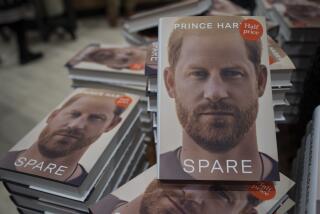Getting a quicker read on Potter
- Share via
BOSTON — Like millions of Harry Potter fans, Katherine Moss can’t wait to get her fingers on a copy of the sixth entry in J.K. Rowling’s bestselling series.
And for once, the 16-year-old blind student won’t have to wait weeks longer than her sighted friends to dive into “Harry Potter and the Half-Blood Prince.”
The book goes on sale at midnight tonight. A Braille edition is due out three days later -- much earlier than with previous Potter books, thanks to a new arrangement between publisher Scholastic Inc. and the National Braille Press in Boston.
Moss, a student at the Perkins School for the Blind in Watertown, Mass., doesn’t want the book read aloud to her. She wants to savor each word of the text at her own pace.
“When I read it in Braille, it takes me a lot longer,” she said. “That’s a good thing. Usually, I don’t want it to end. That’s how much of a reader I am.”
For the first time, Scholastic provided the National Braille Press with an advance copy of the Harry Potter book, which is kept under tight wraps. For the past two weeks, more than four dozen employees at the Boston printing house have been working overtime to print a batch of 800 Braille copies of “Half-Blood Prince.”
Tanya Holton, NBP’s vice president of development, said it usually takes months, if not a year or two, for published books to make it into Braille form. “This is the only book we have blitzed like this before, because readers are clamoring for it,” she said.
The Braille edition is nearly twice as long as the 1,100-page hardcover version. It comes in nine volumes, takes up 13 1/2 inches of shelf space and weighs about 11 pounds. Each Braille book costs $62 to produce, but the nonprofit NBP is selling them for $17.99 -- the same as Amazon.com, according to Holton. A local lumber retailer donated $100,000 to help make up the difference.
More than 300 people have pre-ordered the book from NBP.
Only 500 to 600 new Braille titles are published each year -- about 1% of all books published, according to Kim Charlson, the Perkins School’s library director.
More to Read
Sign up for our Book Club newsletter
Get the latest news, events and more from the Los Angeles Times Book Club, and help us get L.A. reading and talking.
You may occasionally receive promotional content from the Los Angeles Times.










